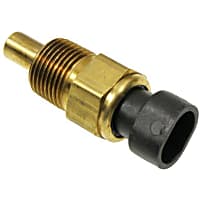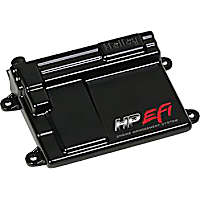Q: I have a 1996 Buick Roadmaster with a 5.7L engine. Codes P0118 and P0115 are set. I changed both temperature sensors, but that did not fix the problem. What could be causing these codes to reset?
– Ernesto from Vado
A: Hello, Ernesto. Codes P0118 and P0115 both stand for Engine Coolant Temperature (ECT) Sensor Circuit High Voltage. On your car, these codes are set when the powertrain control module (PCM) perceives the engine coolant temperature to be less than -40 degrees Fahrenheit for 4.5 seconds or more.
As you pointed out, your car has two temperature sensors: one for the gauge and one for the PCM. Code P0118 applies to the PCM feedback sensor, which is the one that’s mounted in the water pump. You can disregard the sensor for the gauge, as it has nothing to do with this code.
On your car, the PCM provides both a 5-volt reference and ground to the ECT sensor. The PCM monitors the changes in reference voltage caused by the sensor’s varying internal resistance. The voltage is high when the engine is cold and low when the engine is hot.

Since you’ve already replaced the ECT sensor, we’ll assume that the sensor is good. That indicates there’s a problem somewhere in the ECT sensor’s circuit that is causing the code to reset. You’ll need to pinpoint the circuit problem to fix the code.
Start by performing a visual inspection of the sensor’s wiring and connector, looking for issues, such as damaged wires or corrosion.
Should you find that everything looks okay, you’ll need to move on to testing the sensor’s circuit. If you have the tools and the know-how, you can obtain a copy of the factory wiring diagram (through a repair database) and troubleshoot the problem yourself. Otherwise, it might be best to let a professional tackle the job for you.
Products Mentioned in this Guide
Any information provided on this Website is for informational purposes only and is not intended to replace consultation with a professional mechanic. The accuracy and timeliness of the information may change from the time of publication.


 Coolant Temperature Sensor
Coolant Temperature Sensor
 Engine Control Module
Engine Control Module















